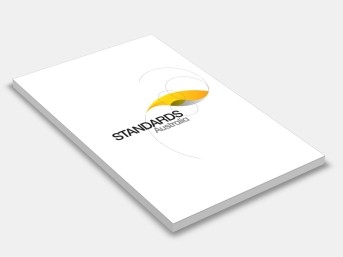AS 3786:2014 Smoke alarms using scattered light, transmitted light or ionization
Standards Australia
Supersedes: AS 3786-1993 Smoke alarms
Supersedes: AS 3786-1993 AMDT 1 Smoke alarms
Supersedes: AS 3786-1993 AMDT 2 Smoke alarms
Supersedes: AS 3786-1993 AMDT 3 Smoke alarms
Supersedes: AS 3786-1993 AMDT 4 Smoke alarms
Draft Designation: DR AS 3786This Standard incorporates Amendments No. 1 (August 2015) and No. 2 (October 2018). The changes required by the Amendment are indicated in the text by a marginal bar and amendment number against the clause, note, table, figure or part thereof affected.
This Standard is based on ISO 12239:2010, Smoke alarms using scattered light, transmitted light or ionization.
The objective of this Standard is to prescribe requirements for smoke alarms intended for use, wholly or partially, as part of an automatic smoke detection system in domestic dwellings or residential accommodation buildings as required by the National Construction Code or State and Territory regulations.
The objective of this edition is to define the requirements for smoke alarms having given due consideration to requirements within International Standards, as set out by ISO, and those specific to the Australian environmental and regulatory framework.
The terms ‘normative’ and ‘informative’ have been used in this Standard to define the application of the appendix to which they apply. A ‘normative’ appendix is an integral part of a Standard, whereas an ‘informative’ appendix is only for information and guidance.
Statements expressed in mandatory terms in notes to figures and tables are deemed to be requirements of this Standard.
Notes used in this Standard are of an advisory nature only and are used to give explanation or guidance to the user on recommended considerations or technical procedures, or to provide an informative cross-reference to other documents or publications. Notes to clauses in this Standard do not form a mandatory part for conformance to this Standard.
This Standard for smoke alarms is drafted on the basis of functions that are to be provided on all smoke alarms covered by this Standard, and requirements for optional functions where included with smoke alarms.
Each optional function is set out as a separate entity, with its own set of associated requirements, in order to permit smoke alarms covered by this Standard with different combinations of functions to conform to this Standard.
Two optional sound output patterns are specified in this Standard. The options allow national regulators to choose a sound pattern conforming to ISO 8201 or ISO 7731 depending on the desired response by building occupants to an alarm condition.
An optional extended temperature-range test is included for smoke alarms installed in areas subject to a greater temperature range, such as leisure accommodation vehicles.
Additional functions are permitted, even if not specified in this Standard, provided they do not jeopardize any mandatory function required by this Standard.
This Standard specifies requirements, test methods and functional criteria for smoke alarms that operate using scattered light, transmitted light or ionization, intended for household or similar residential applications.
This Standard also covers (but does not require) the inclusion within the smoke alarm of facilities for:
(a) visual fault condition indication;
(b) extended temperature-range operation;
(c) interconnection with other similar smoke alarms or accessories; and
(d) alarm-silence facility.
Where such facilities are included, this Standard specifies applicable requirements.
Contents:
1: Scope
2: Normative References
3: Definitions
4: General Requirements
5: Tests
6: Test Report
Appendix A: Properties For Smoke Tunnel For Response-Threshold Value Measurement
Appendix B: Test Aerosol For Response Threshold Value Measurements
Appendix C: Smoke-Measuring Instruments
Appendix D: Apparatus For Dazzling Test
Appendix E: Apparatus For Impact Test
Appendix F: Fire Test Room
Appendix G: Smouldering Pyrolysis Wood Fire (Tf2)
Appendix H: Glowing Smouldering Cotton Fire (Tf3)
Appendix I: Flaming Plastics (Polyurethane) Fire (Tf4)
Appendix J: Flaming Liquid (N-Heptane) Fire (Tf5)
Appendix K: Guidance On The Construction Of The Smoke Tunnel
Appendix L: Guidance On The Construction Of The Measuring Ionization Chamber (MIC)
Fire Detection, Warning, Control and Intercom Systems.
FP-002
Australasian Fire and Emergency Service Authorities Council; Australian Building Codes Board; Australian Chamber of Commerce and Industry; Australian Industry Group; Australian Institute of Building Surveyors; CSIRO Manufacturing&Materials Technology; Deafness Forum of Australia; Department of Human Services (Victoria); Engineers Australia; Fire Protection Association Australia; National Electrical and Communications Association; National Fire Industry Association; Property Council of Australia; Society of Fire Safety.
